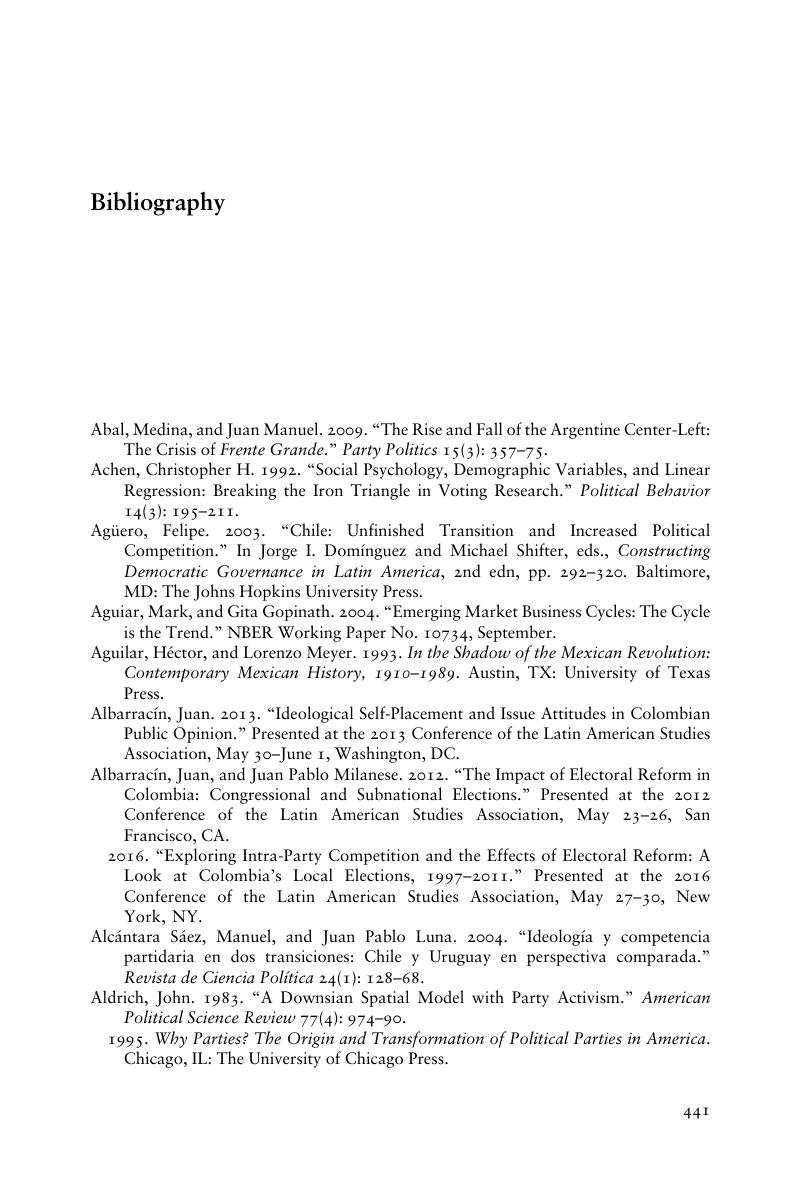Book contents
- Party Systems in Latin America
- Party Systems in Latin America
- Copyright page
- Dedication
- Contents
- Figures
- Tables
- Contributors
- Acknowledgments
- List of Political Parties and Coalitions by Country
- Introduction
- Part I Party System Institutionalization: What It Is and How It Affects Democratic Politics
- Part II Country Cases
- Part III Comparative Analyses
- Bibliography
- Index
- References
Bibliography
Published online by Cambridge University Press: 01 February 2018
- Party Systems in Latin America
- Party Systems in Latin America
- Copyright page
- Dedication
- Contents
- Figures
- Tables
- Contributors
- Acknowledgments
- List of Political Parties and Coalitions by Country
- Introduction
- Part I Party System Institutionalization: What It Is and How It Affects Democratic Politics
- Part II Country Cases
- Part III Comparative Analyses
- Bibliography
- Index
- References
Summary

- Type
- Chapter
- Information
- Party Systems in Latin AmericaInstitutionalization, Decay, and Collapse, pp. 441 - 487Publisher: Cambridge University PressPrint publication year: 2018

